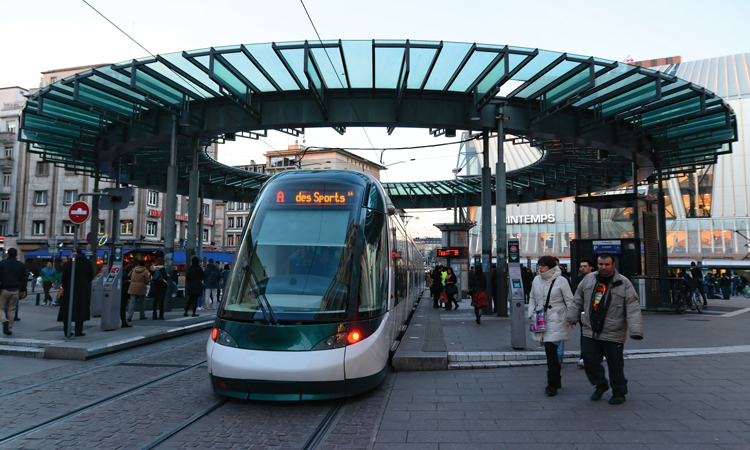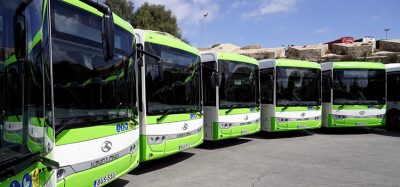Open data: the multi-channel information system for passengers
- Like
- Digg
- Del
- Tumblr
- VKontakte
- Buffer
- Love This
- Odnoklassniki
- Meneame
- Blogger
- Amazon
- Yahoo Mail
- Gmail
- AOL
- Newsvine
- HackerNews
- Evernote
- MySpace
- Mail.ru
- Viadeo
- Line
- Comments
- Yummly
- SMS
- Viber
- Telegram
- Subscribe
- Skype
- Facebook Messenger
- Kakao
- LiveJournal
- Yammer
- Edgar
- Fintel
- Mix
- Instapaper
- Copy Link
Posted: 11 October 2014 | Alain Caffart - CTS | No comments yet
All traveller information aims to be reliable and as comprehensive as possible. This is the sole responsibility of the authority that organises and operates a transport network. Involving as many partners as possible in the dissemination of this information allows it to be made accessible to as many people as possible, and offers a much larger number of personalisation options than if it were being operated by a single entity. In order to make this strategy sustainable, the associated economic model has to follow this viability and the legal framework has to stay unequivocal. Alain Caffart – Information Systems Manager at the Compagnie des Transports Strasbourgeois (CTS) – the company responsible for the comprehensive public transport network of the urban community of Strasbourg (France) – explains that, like many networks, they have greatly strengthened the IT resources dedicated to the management of its network.


We have progressed from the production of between four and five timetables per year in 2001, to the production of 60 different timetables in 2013. This precision in the size of what we offer has enabled us to make significant gains in productivity and predictability. The improvement of our vehicle tracking system has allowed us to better manage the risks that can be experienced by an urban network. All these improvements benefit our customers in terms of regularity and punctuality.
In recent years, given the reliability of our databases and the industrialisation of our processes, we have been able to review the ways in which we make information available to our customers. We are continually improving the dissemination of this information through our equipment, but we are also able to take the use of transport information into everyday life through an open data policy.
Theoretical timetables
Our current vehicle scheduling/customisation tools enable us to make our offering smarter and better adapted to the life of an urban network. Outside the classic periods of summer, winter and school holidays, we are now capable of producing graphics that take special events into account (roadworks, cultural events, etc.). For example, the week from 21 to 27 July 2014 saw us produce four graphics taking into account the roadworks being carried out at a communication hub, impacting four tramlines and a major commercial event in the city centre. This led us to redesign the whole network.
To allow our network management system to perform in real-time, we need this wealth of information. Classic traveller information in the form of a route timetable leaflet or information sheet at the stop cannot be up-to-date for all configurations. There are delays in layout, printing, and posting at 1,300 stops, making it impossible to disseminate hard copy information at a reasonable cost.
Dematerialised travel information offers much greater flexibility. Since our first search engine went online in 2005, we have decided not to manage this type of functionality internally and to be capable of providing reliable data to different partners. This is why on our current website visitors will not find a search engine for CTS routes, but the engine for the Alsace region, fully integrated into our website. It is supplied with GTFS format files, allowing us to deliver reliable information to all our customers.
This file format has become a de facto standard, allowing us to open up this access to all our partners via our open data. These customers can offer the full service down to the details of each route or decide only to offer the network topology, either with or without the list of stops, which are all geo-located.
Real-time information
Real-time information is of prime importance to our customers before and/or during their journey. How long before the vehicle arrives? Is this the right vehicle for my destination? When I’m travelling, where am I along the route? How many stops until I need to get off? All these elements may or may not contribute to the ease of a passenger’s journey and ultimately whether they will continue to take public transport or not.
As is also the case with the theoretical element; every system distributing real-time information must of course be integrated into the overall system. Our vehicle information systems are directly linked to our real-time calculator, allowing, on the one hand, complete protection of this information and, on the other hand, constant updates, without waiting for the cycles of a particular piece of equipment to refresh. This point is important when it comes to platform equipment. In particular, it means that information about a vehicle that has just left the stop is immediately no longer posted.
The vehicle registration system database containing journey information for all our vehicles is refreshed every 20 seconds. It is accessible through two different channels: the first is based on requests sent by SMS, the second concerns all web channels. Requests to the vehicle registration system database will be identical. They request the next arrival times for a stop, a route and potentially for a particular time slot.
For an example, see Figure 4. Here, the two next arrivals for the Rotonde stop (code number 550) which serves tramlines A and D, and bus routes 17 and 19, are listed. By specifying stop 550F, the request will give arrival times for line A in the direction of ‘Parc des sports’.
In order to optimise the number of requests, a cache system has been put in place, which means that the vehicle registration system server will not be requested if the information has been cached within less than one minute.
The entire system is scalable depending on the task required. So far, the initial servers have been up to the task.
Open data will offer access to a web service that has three different methods, which include:
- Search for a stop code from a description
- Real-time arrival from a SMS code
- Download a timetable from a SMS code.
The Open Data Charter
CTS operates in accordance with law no. 78-753 of 17 July 1978, which created a right to the reuse of public information. It has implemented a ‘REUTILISATION LICENCE FOR CTS PUBLIC INFORMATION IN OPEN ACCESS’. This license is intended to authorise users to share, edit and freely use public data available on the CTS Open Data1 portal, provided the modification is not an alteration of data or a distortion of its meaning. This license does not grant any intellectual property rights over the data.
The reuse of public information is free. These rights expressly permit commercial and non-commercial use.
The signing of this license gives the partner an ID code, which must be entered as a parameter to every web service request. This point gives us the opportunity to communicate with all those involved and to warn them about important modifications to the network. It also allows us to benefit from statistics on web service usage and possibly to deny access to an unscrupulous contractor.
This license allows all the actors to be protected and reassured regarding this system.
Feedback from the market
We supply our data to global operators, such as Google, Microsoft, Nokia and Apple, and to niche operators such as Rengo and Hopla, via institutional bodies.
The majority of the applications are transport-oriented, but we will also find applications focused on other subjects which will also point to the available transport offering. In this category, we will find applications that indicate available sports facilities with a list of suggested activities and the means to reach them by public transport, or the presentation of a real estate programme with corresponding transport links. We also see the appearance of applications linked to special events, combined directly with the transport offering. These applications are very important for us because they anchor transport in daily life.
Our areas of thought for the future are the management of information in the event of a breakdown in the situation, which is the most complex working field, and making available our information about the accessibility of our stops.
The decision to open up our data through a controlled Open Data mechanism has enabled us to enhance the wealth of our travel information, to reach new users, and to reinforce our image as an innovative company involved in the life of the community, while reducing our costs.
Reference
- The CTS information reuse license: accessible on-demand on our website http://www.cts-strasbourg.eu/fr/portail-open-data/. List of data provided includes timetables and real-time: search for a stop code from a description; real-time arrival from a SMS code; and download a timetable from a SMS code. It also includes timetable sheets and route pictogram. Also included are details of theoretical timetables in GTFS format, including: list of stops; list of routes and destinations; and list of journeys. Also included is a route map; occupancy of shared bike stations in real-time and occupancy of park and rides in real-time.
Biography


He has been working for Compagnie des Transports Strasbourgeois (CETS) since 2001 (the urban network operator for Strasbourg, France) as Information System Manager. First, Alain had to change, with his team, many aspects of internal software – for example, the Real-Time Information System and computerised maintenance management system. Now, he focuses on customer approach. Alain has a patent pending which radically changes the rules of ticketing: using a NFC smartphone and a back-office system. He took the opportunity to build an Open Data infrastructure which offers information on timetable, real-time passenger information and for the future he thinks about how to complete data-mining in an efficient way.
Issue
Issue 5 2014
Related cities
France
Related organisations
Compagnie des Transports Strasbourgeois (CTS)
Related people
Alain Caffart








